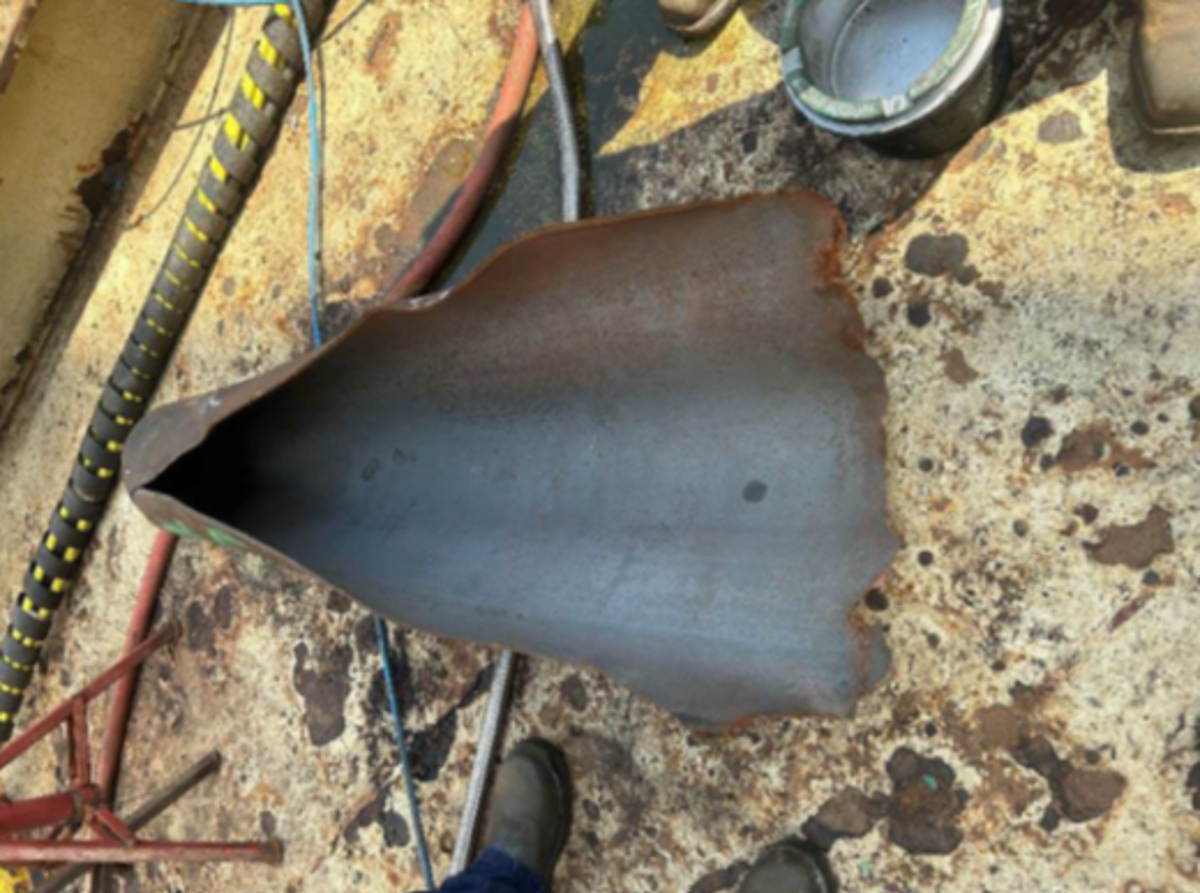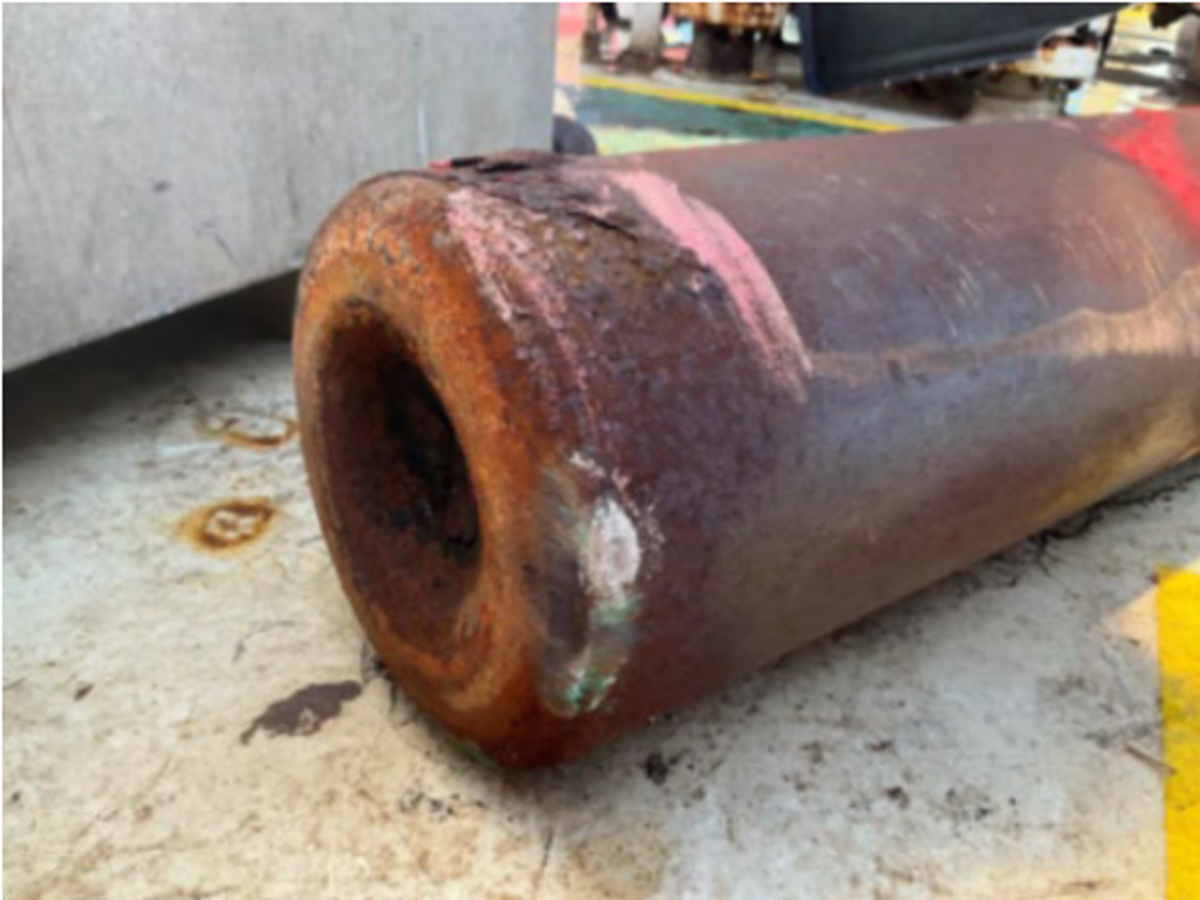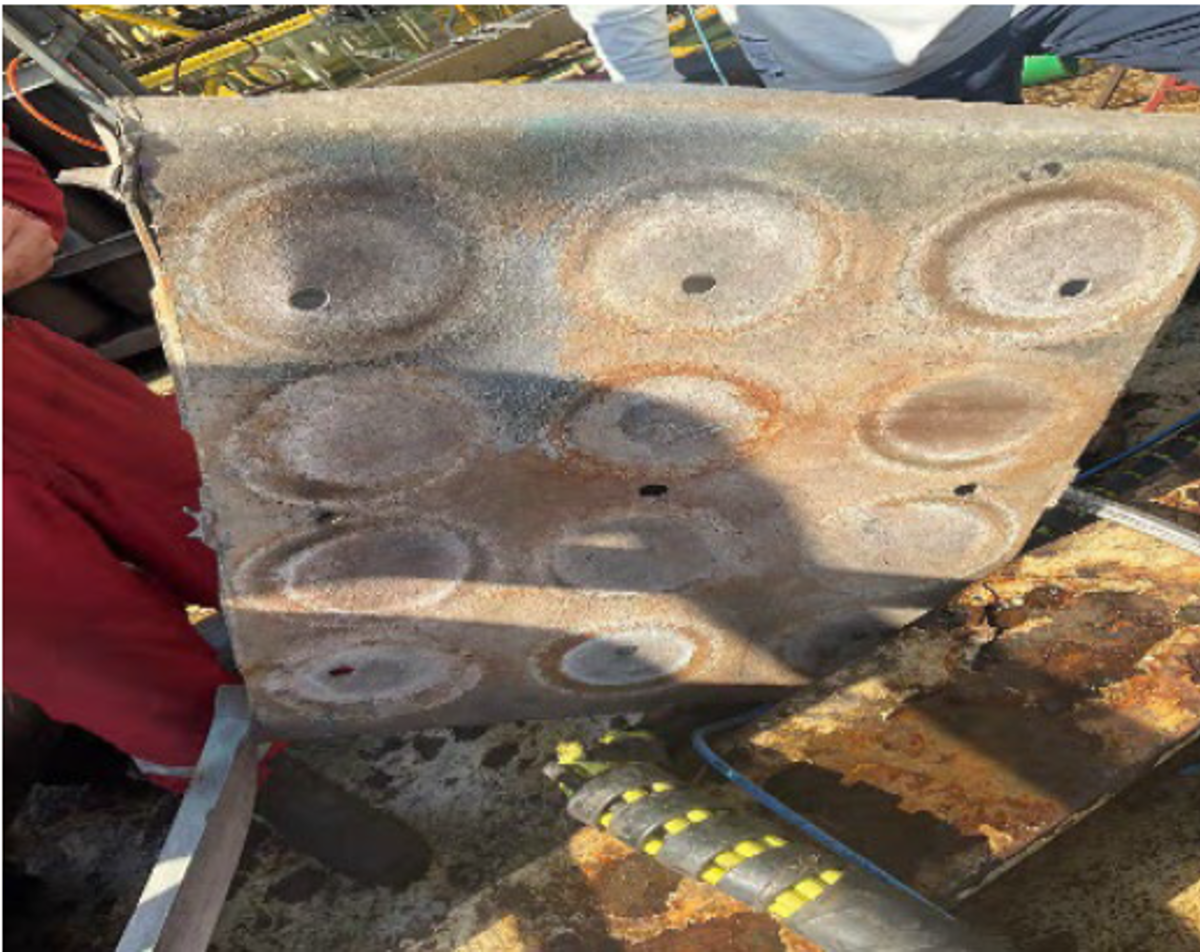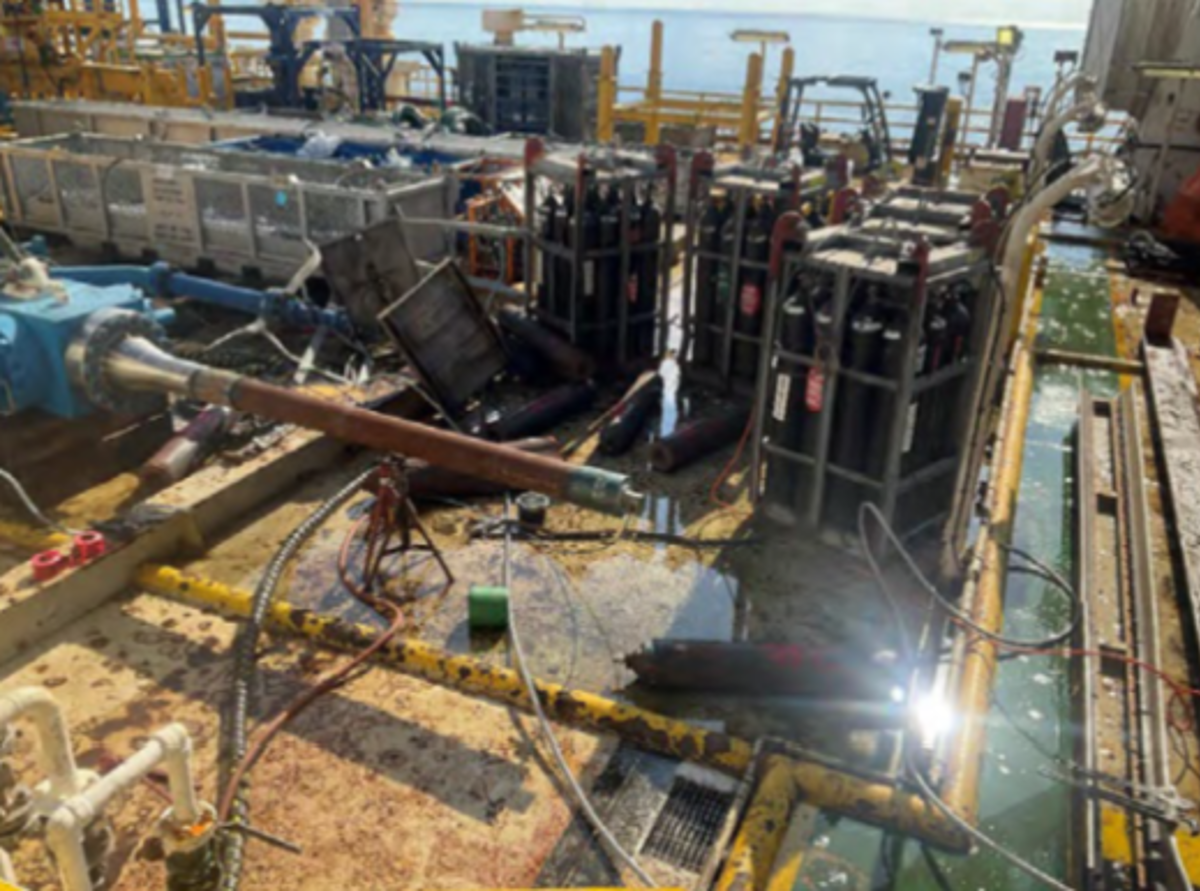Nitrogen cylinder ruptured
- Safety Flash
- Published on 3 September 2024
- Generated on 10 July 2025
- IMCA SF 18/24
- 2 minute read
Jump to:
A high pressure nitrogen cylinder in a quad of 12 cylinders located on a drill rig floor ruptured without warning.
What happened?
The cylinders were charged to 2,400psi and were not connected to anything else at the time of the incident. The rack was destroyed and the other cylinders in the quad were propelled by the blast up to 15m away.
Why did it happen?
The base of the cylinder that ruptured was heavily corroded. Other cylinders in the quad had evidence of similar but less severe corrosion.
The cylinders were 9 years into their 10-year hydrotest cycle, and had been visually inspected by the supplier in accordance with applicable industry guidance, when they were refilled some three months before the incident, before being loaded out to the rig. However, the severe corrosion that caused the rupture was not spotted during this inspection;
The cylinder that ruptured was located in the middle of the quad and therefore not easy to properly inspect without disassembly of the quad.
Calculations showed that the fatal blast zone for a single cylinder of this size pressurised to 2,400psi would be around 1.5 metres. The severity of the blast caused the rack to be destroyed and the other cylinders to be propelled across the deck.
Lessons learned
- Are the cylinders on your facility or vessel certified and in good condition?
- Are you able to see the condition of all cylinders in every rack?
- Are all cylinders located on a free draining base to minimise corrosion?
- Do you know what level of visual inspection of cylinders/quads is provided by your supplier?
- Are all cylinders on your facility stored and located in accordance with the relevant industry regulations?
Related Safety Flashes
-
IMCA SF 17/24
29 August 2024
-
IMCA SF 24/21
31 August 2021
-
-
IMCA SF 16/16
27 June 2016
-
IMCA SF 17/21
16 June 2021
IMCA Safety Flashes summarise key safety matters and incidents, allowing lessons to be more easily learnt for the benefit of the entire offshore industry.
The effectiveness of the IMCA Safety Flash system depends on the industry sharing information and so avoiding repeat incidents. Incidents are classified according to IOGP's Life Saving Rules.
All information is anonymised or sanitised, as appropriate, and warnings for graphic content included where possible.
IMCA makes every effort to ensure both the accuracy and reliability of the information shared, but is not be liable for any guidance and/or recommendation and/or statement herein contained.
The information contained in this document does not fulfil or replace any individual's or Member's legal, regulatory or other duties or obligations in respect of their operations. Individuals and Members remain solely responsible for the safe, lawful and proper conduct of their operations.
Share your safety incidents with IMCA online. Sign-up to receive Safety Flashes straight to your email.



